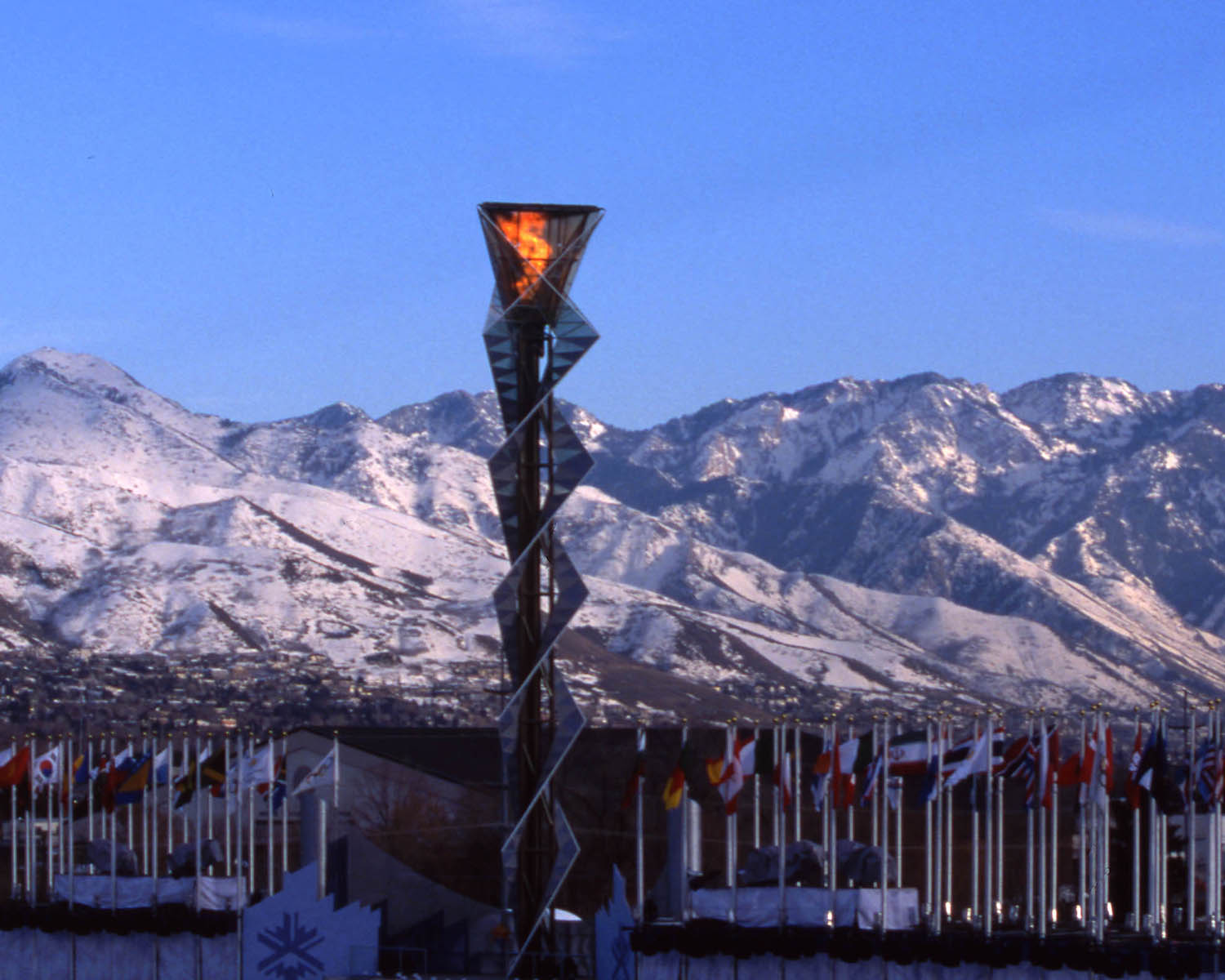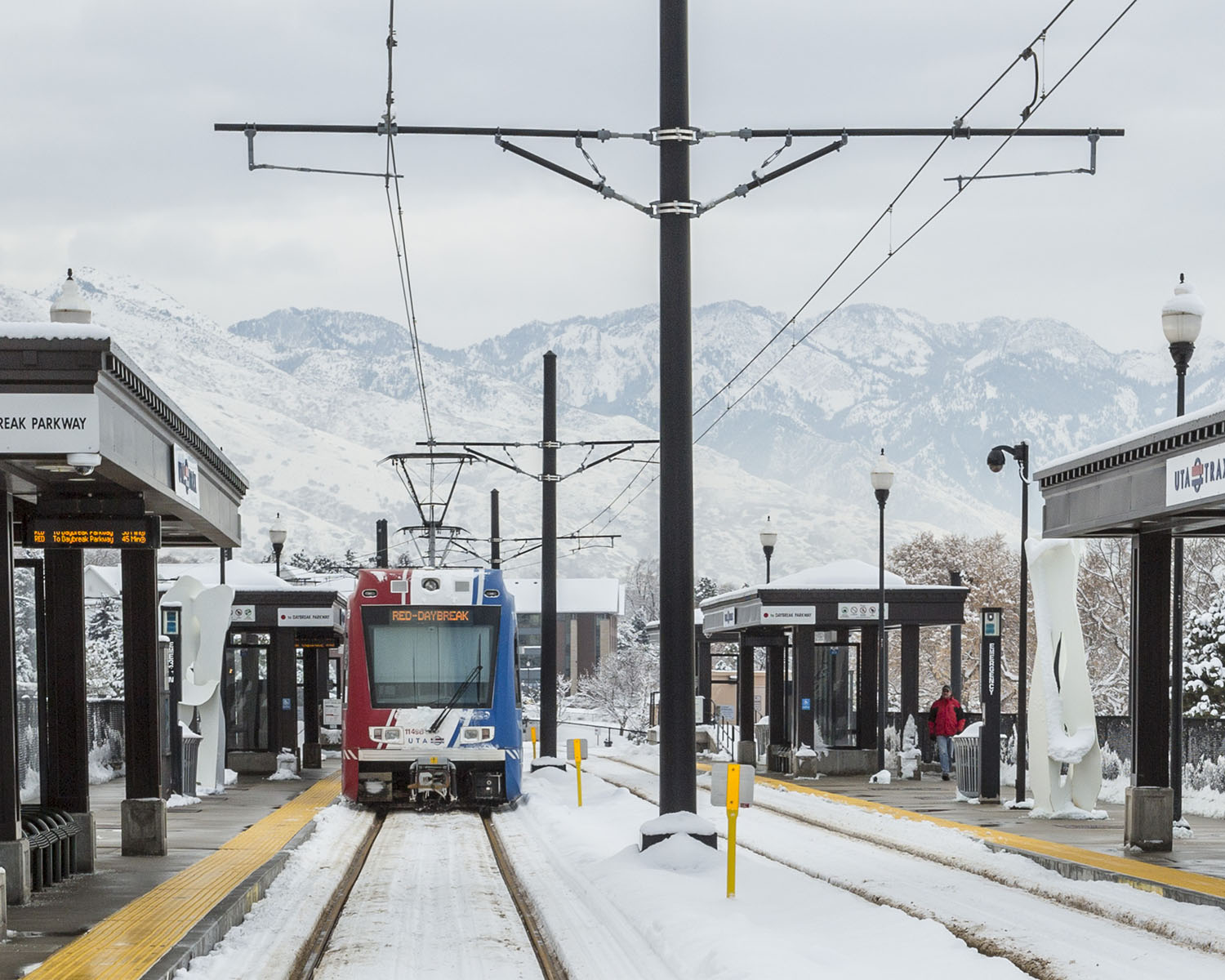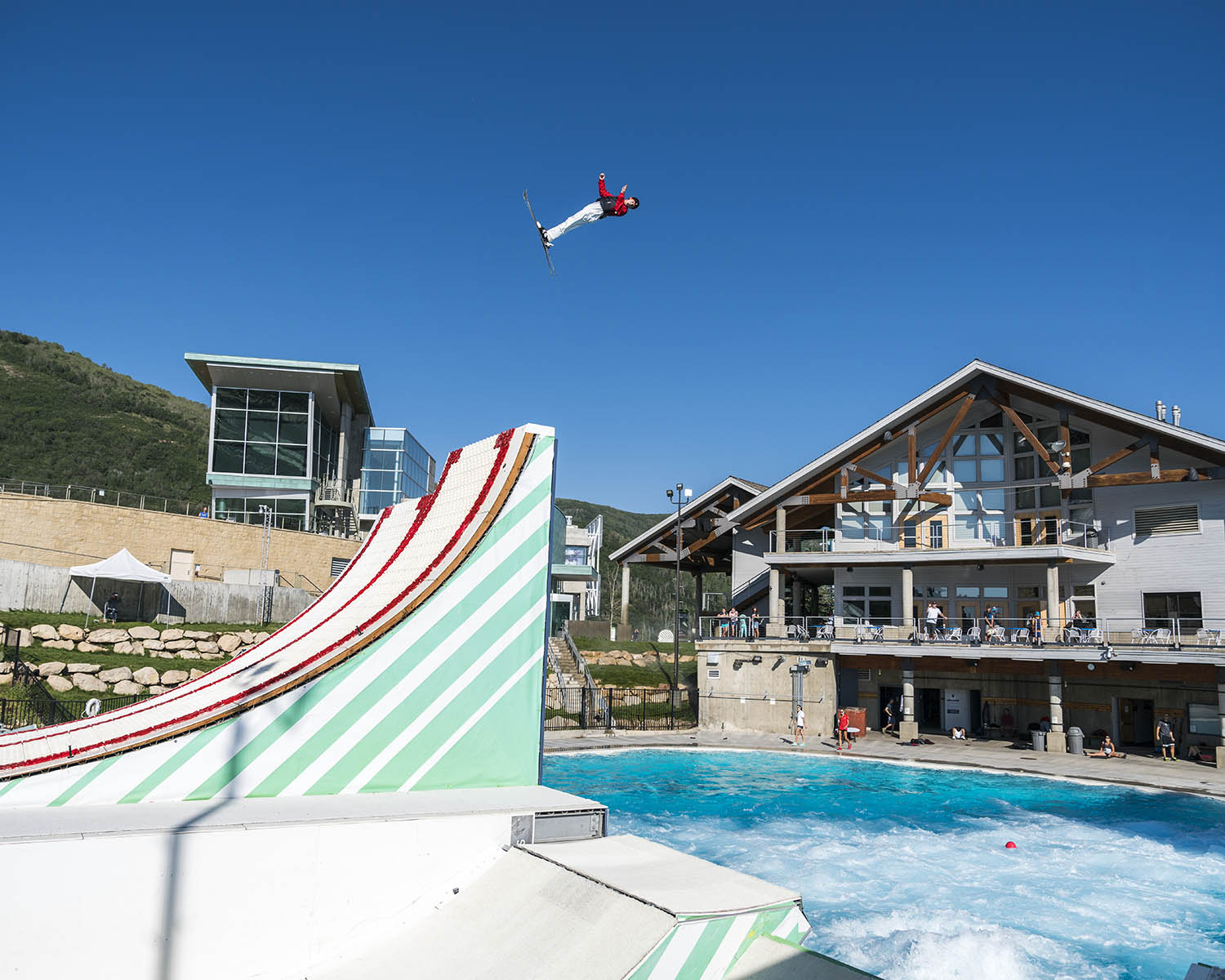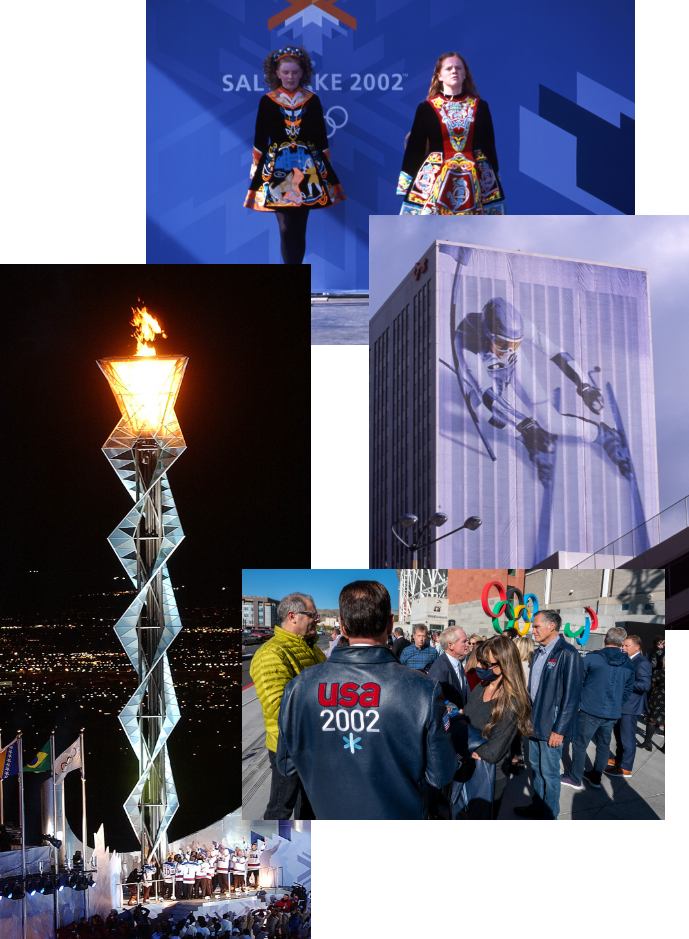The University of Utah is pivotal to Salt Lake City's aspirations to be a repeating Olympic host city. Campus was ground zero for historic moments of the 2002 Winter Games and is poised to fill the same role in 2034.
From housing and providing medical care for international winter sports athletes, to hosting the Winter Games' pomp and circumstance, the University of Utah was an essential Olympic space 20 years ago.

In anticipation of hosting the Olympic Athletes Village, the University of Utah expanded its on-campus residence hall housing to accommodate 4,000-4,500 people during the Games' three weeks. Shoreline Ridge, the Peterson Heritage Center, and renovated Fort Douglas Circle houses were all completed in 2001, at a cost of $120 million.
Working with the Salt Lake Organizing Committee's official medical provider, Intermountain Health Care (IHC), University of Utah Health Hospitals & Clinics subcontracted with IHC to develop the Olympic Village Polyclinic and other medical services provided on campus.
Following the September 11 and anthrax attacks in the weeks afterward, U researchers played a critical role in bioterrorism surveillance during the Games, implementing a real-time Outbreak and Disease Surveillance system for the seven weeks of competition. The team monitored over 114,000 acute care encounters in health care facilities. The system remains operational today.
At Utah's first Olympic Winter Games 20 years ago, the U's Rice-Eccles Stadium was expanded to fit 46,500 seats (at a cost of $50 million). With additional bleacher seating on the field, the stadium hosted 55,000 audience members, and millions more on TV, watching the Opening Ceremonies on Feb. 8, 2002 and Closing Ceremonies on Feb. 24, 2002.
Despite frigid temperatures, more than 10,000 actors and volunteers represented Utah's pioneer history and pristine mountain landscapes in the performances.
The games went on just five months after the September 11 terrorist attacks, and security throughout campus and the city was tight. Eight American athletes carried the tattered U.S. flag that had flown at the World Trade Center into the stadium.
The flag bearers of 78 National Olympic Committees entered Rice-Eccles Stadium informally in a single file, ordered by the English alphabet. Behind them marched all the Olympic athletes.
Since the 2002 Winter Games, the stadium has hosted a large number of events for Salt Lake City, averaging 150 events per year, including: the Real Salt Lake v. L.A. Galaxy soccer game in 2008, many AMA Supercross Championships, concerts, and music festivals.
An average of 450,000 patrons come through the gates of Rice-Eccles Stadium every year.

Utah's light rail system, TRAX, was the largest public transportation project completed for the 2002 Winter Olympic Games. TRAX began operations in 1999. The first 2.3-mile (3.7 km) segment of the University Line opened ahead of schedule on Saturday, December 15, 2001, providing service from the Delta Center to Rice-Eccles Stadium, at a cost of $148.5 million.
"TRAX and FrontRunner rail lines are attributed with spurring development that has resulted in nearly 1,300 net new jobs generating over $66 million in income and $227 million in business sales annually," according to a report from the Boston-based Economic Development Research Group.
Today the UTA Ed Pass is available to all University of Utah students, faculty, and staff for free. The pass includes unlimited transit access to UTA buses, TRAX, and FrontRunner, making it easy to get to campus car-free.

Joe Pack, a former student at the U, was the local hero in the 2002 Winter Games. His performance in 2002 was his first on the Olympic stage. He won a silver medal in the freestyle skiing competition, proudly representing the university and the nation while practically competing on his home turf.
The university has trained and hosted some of the world's most exceptional athletes. Many of these athletes have reached the top of their respective sports and have earned prestigious awards. For more on these athletes:

Physical reminders of the 2002 Olympics are scattered around the University of Utah and Salt Lake City. Most Olympic venues remain in use, from the Utah Olympic Oval in Kearns to the Utah Olympic Park—home to ski jumps, bobsled tracks and athletes in training.
On campus, the TRAX light rail lines, expanded Rice-Eccles Stadium, Eccles Legacy Bridge, Cauldron Plaza and Fort Douglas and Shoreline Ridge housing are essential legacies of the games.


With the July 23-24, 2024 announcement at the Paris Summer Games, Salt Lake City is slated once again to host an upcoming Winter Olympic Games. With this responsibility comes all the excitement, logistics planning and complicated scheduling campus experienced 20 years ago. Some construction is possible too.
According to a 2024 economic analysis by the Kem C. Gardner Policy Institute, the 2034 Winter Olympic and Paralympic Games could generate $6.6 billion in economic output in Utah, 42,000 job-years of employment and $2.5 billion in personal income.
The Salt Lake City-Utah Committee expects to spend just $31.2 million on permanent capital investments for the 2034 Winter Games—compared to $286.7 million on facilities for the 2002 Winter Games (in 2023 dollars). The Committee has also budgeted $206.2 million for temporary infrastructure, signage and wayfinding at venues.
While campus will close during the Games, as it did in 2002, the Olympics offer countless opportunities for U community members to volunteer and watch the world's best athletes compete.